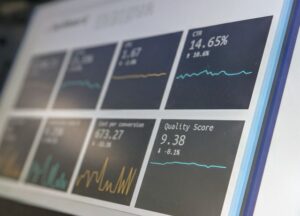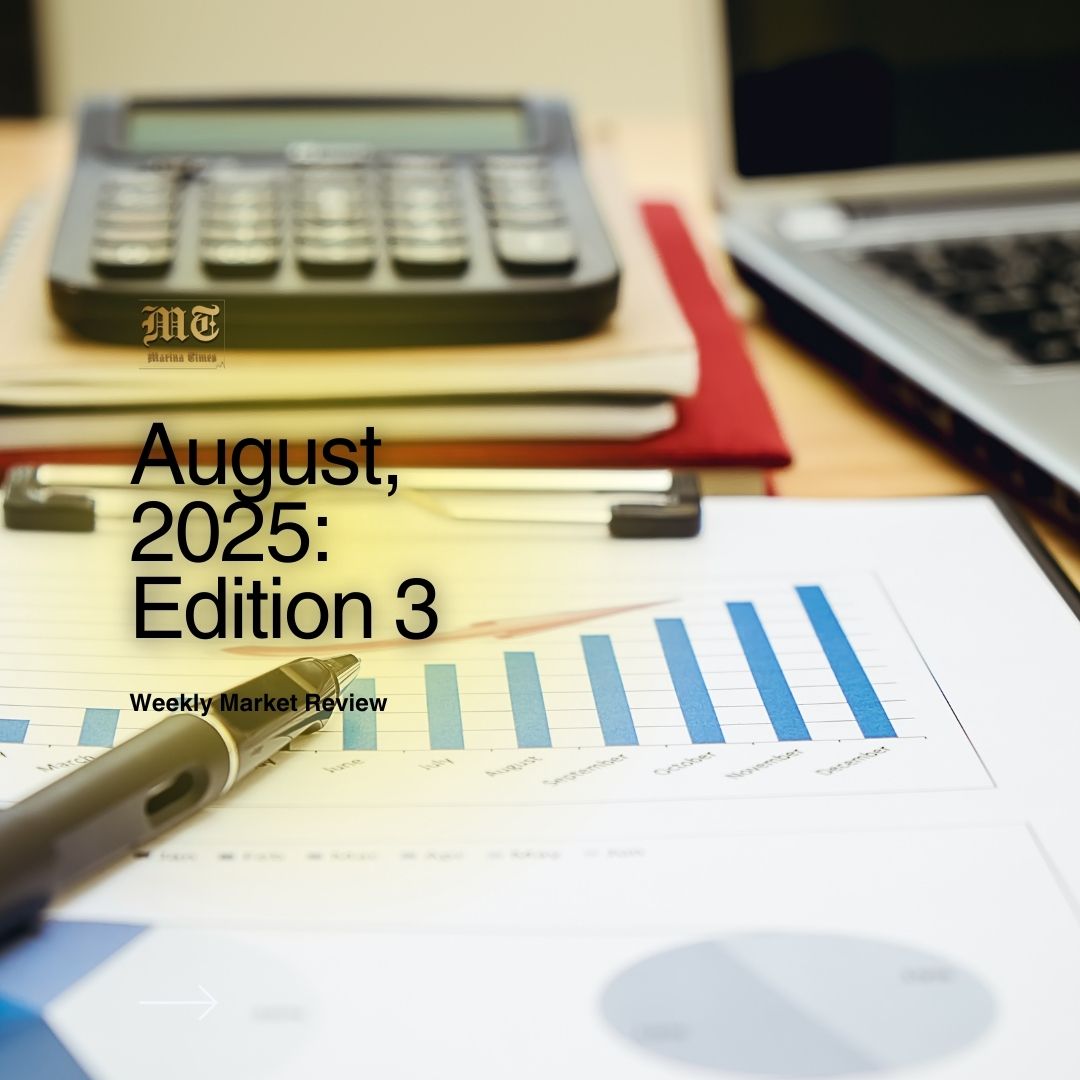

The Nigerian fixed-income market navigated a week of moderate secondary market activity, with trading interest clustered in the mid- to long-tenor segment. Sentiment shifted after the Debt Management Office (DMO) released a revised FGN Bond issuance calendar for the third quarter, introducing a new 5-year bond and reopening of the 7-year bond, each with an offer range of ₦80–₦120 billion. July inflation showed mixed dynamics, with headline inflation easing to 21.88%, its lowest since March, driven largely by softer core pressures, while food prices rose to 22.74%, reinforcing persistent supply-side strains.
On Friday, the money market opened with a deficit of over ₦94 billion, capping a week that remained negative despite an earlier surplus of ₦313.92 billion. Consequently, the interbank rates climbed sharply over the week, with the Overnight (O/N) rising from 27.00% to close at 32.60%, while the Open Repo Rate (OPR) increased from 26.50% to close at 32.30%. In the FX market, the Naira traded between a high of $/₦1,543.00 and a low of $/₦1,526.00 during the week, closing at $/₦1,530.00 on Friday.
The Debt Management Office’s (DMO) Q3 2025 FGN bond auction calendar signals a strategic shift in issuance structure, featuring two instruments: a new 5-year FGN AUG 2030 and a reopened 7-year 17.95% FGN JAN 2032, each with an offer size range of ₦80–₦120 billion. This marks a significant scale-up from July’s modest ₦20 billion and ₦60 billion offers for the reopened 19.30% FGN APR 2029 and 17.95% FGN JAN 2032, with the 2029s now removed from the line-up. The introduction of the 2030s not only refreshes the tenor curve but also sets its inaugural stop rate as the coupon rate at the August auction, a move that could anchor higher yields in the near term. Combined with elevated supply, this suggests a possible upward drift in interest rates, aligning with rising government borrowing needs and persistent investor demand for premium yields.
The secondary market recorded moderate activity, with interest concentrated in the mid- to long tenors, with rates hovering between the mid-16% and 17% range for most actively traded bonds (particularly the 2031, 2032, 2033, and 2034 maturities) and T-Bills. OMO bills saw rates between the 23% and 25% level, reflective of tight liquidity and elevated rates skewed towards shorter maturities. Market reaction turned bearish following the DMO’s release of the revised Q3 FGN Bond issuance calendar, which triggered an upward adjustment in yields of almost 100bps, with rates edging closer to the 18% mark, weakening market sentiments.
According to the National Bureau of Statistics (NBS), Nigeria’s July 2025 inflation data presents a mixed trend: headline inflation eased for the fourth consecutive month to 21.88% from 22.22% in June (a 34bps decline), primarily driven by a sharp decline (143bps) in core inflation to 21.33%, signalling softer price pressures in non-food, non-energy categories. In contrast, food inflation rose by 77bps to 22.74%, reflecting persistent supply chain bottlenecks, seasonal harvest pressures, and climate-induced disruptions in key agricultural belts. The divergence suggests that while underlying inflation is cooling, elevated food costs remain a critical risk, potentially tempering the Central Bank of Nigeria’s (CBN’s) room for monetary easing and sustaining pressure on real household earnings.
INFLATION CATEGORY | JULY | JUNE |
HEADLINE | 21.88% | 22.22% |
CORE | 21.33% | 22.76% |
FOOD | 22.74% | 21.97% |
Nigeria’s approval of a phased plan to refinance ₦4 trillion ($2.61 billion) in legacy electricity sector debt marks a significant fiscal intervention with both macroeconomic and capital market implications. The debt owed to 27 power generation companies for unpaid invoices between 2015–2023 has constrained sector liquidity, stalled capital expenditure, and worsened power supply challenges. Clearing these obligations within the planned execution window would strengthen generating companies (‘GenCos’) balance sheets, improve cash flow for fuel supply contracts, and potentially boost generation output. While the financing structure has not been disclosed, possible instruments could include bonds or other capital market mechanisms by the DMO, which, if used, would expand investable fixed-income supply and draw interest from institutional investors, though potentially placing upward pressure on rates. The paired initiative with structural reforms, including a 35% subsidy reduction and cost-reflective tariffs projected to save ₦1.1 trillion annually, signals a shift toward a more commercially viable power sector. Where implemented effectively, the bankability of future energy projects is expected to be enhanced. In addition, it is expected that there would be an attractiveness of both private and institutional capital across the electricity value chain, and reduced risk to Nigerian power sector investments. However, execution risks, inflationary effects from tariff hikes, and the fiscal implications of new debt instruments remain key watchpoints for investors and credit markets.
The NGX All-Share Index extended its bearish momentum through the week, sliding from 145,948.47 on August 11 to close at 144,628.20 on Friday, August 15, representing a 0.91% weekly loss. The decline was driven by sustained profit-taking in bellwether stocks and cautious market sentiment amidst tighter liquidity conditions. While select sectors saw bargain-hunting, overall sentiment was tempered by macroeconomic uncertainty and cautious positioning ahead of key inflation data.
The Federal Government’s approval of a phased plan to refinance the electricity sector debt represents a significant structural reform in Nigeria’s power industry. Against this backdrop, the DMO’s August 2025 FGN bond auction calendar features a notable increase in offer volume on the 5 and 7-year tenors compared to the previous auction. The larger issuance suggests that the DMO is capitalising on robust investor demand to front-load borrowing, potentially in anticipation of near-term funding needs tied to the planned electricity sector debt refinancing and infrastructural project needs. Investor sentiment is expected to remain constructive, supported by attractive rates, appealing tenor structures, and risk appetite despite inflationary pressures and macro volatility. Key metrics to note include:
—
Where sovereign bonds are confirmed as part of the power sector refinancing plan, this could mark the start of a sustained increase in issuance volumes, potentially steepening or increasing the yield curve. In the near term, strong auction uptake would reinforce confidence in the fixed-income market’s capacity to absorb higher supply, while bolstering fiscal execution of long-delayed power sector reforms. For investors, this environment presents attractive entry points into mid-duration sovereign paper, with scope for price gains where persistent demand compresses yields.
Oil prices ended the week lower after a volatile stretch marked by swings between multi-month lows and brief rebounds. Brent, which opened near $66.7/bbl, dipped to $65.8/bbl midweek before closing Friday at $66.38/bbl, while WTI slipped from $63.99/bbl on Monday to $62.99/bbl on Thursday, finishing the week at $63.36/bbl. By Sunday, the downtrend persisted, with Brent settling at $65.59/bbl and WTI at $61.74/bbl.
The weakness was driven by mounting oversupply concerns, compounded by API and EIA reports of unexpected US crude inventory builds (+3.04 million bbl), pointing to softening demand. Bearish sentiment deepened after the IEA projected a record 2.96 million bpd global surplus in 2026, while the US DOE raised its 2025 surplus forecast to 1.7 million bpd. Hopes of a Russia–Ukraine peace deal following news of a planned Trump–Putin summit on August 15 also weighed on sentiment, as markets priced in the possibility of sanctions relief on Russian oil and greater global supply.
Midweek, temporary support emerged from geopolitical risk premiums, stronger Japanese GDP data suggesting resilient Asian demand, and optimism around potential US monetary easing in September. Still, the rebound proved short-lived as President Trump downplayed the likelihood of a breakthrough with Putin and President Zelensky dismissed territorial concessions, capping risk appetite. Overall, both benchmarks closed weaker on the week, reflecting the market’s continued struggle to balance short-term political risks with a medium-term outlook dominated by ample supply and fragile demand growth.
Nigeria’s near-term market outlook remains finely balanced between easing domestic inflation and persistent global macro headwinds. With over ₦1.6 trillion expected in coupon and maturity inflows, the outcome of the NTB auction will be a guide for rate direction. While liquidity conditions are set for a temporary boost, the CBN’s aggressive mop-up operations may blunt the impact. July’s softer headline inflation provides the CBN with scope to sustain or moderate its policy stance, supporting market confidence. However, upside risks linger from rising global food prices, volatile oil markets, and tighter financial conditions in advanced economies, which could reignite price pressures and weigh on the Naira. The UK’s recent rate cuts may channel portfolio flows toward higher-yielding Nigerian assets, while Wall Street’s record-breaking rally on robust earnings could further lift risk appetite. Still, sticky U.S. inflation threatens to delay the Federal Reserve’s policy pivot, keeping global funding costs high and tempering the scale of potential capital inflows.
By: Sandra A. Aghaizu
Nigeria turns a new page in August,
placing bonds on the block like seeds in fertile soil.
The five-year and seven-year notes…
may be set to clear the old debts haunting the power sector.
Revamping a weary grid…
An urgency hums beneath the numbers,
the DMO calls out…” cash today for tomorrow’s reform!”
So, investors lean in, measuring the wind:
the spread between tenors,
the weight of the bids,
the choice of how much the state will take.
If demand peaks,
the market will speak with confidence…
mid-duration bonds become more than paper,
they turn into tickets for a brighter tomorrow.
Where old debts are buried,
the grid finds new bones,
and at last,
we hold steady light.